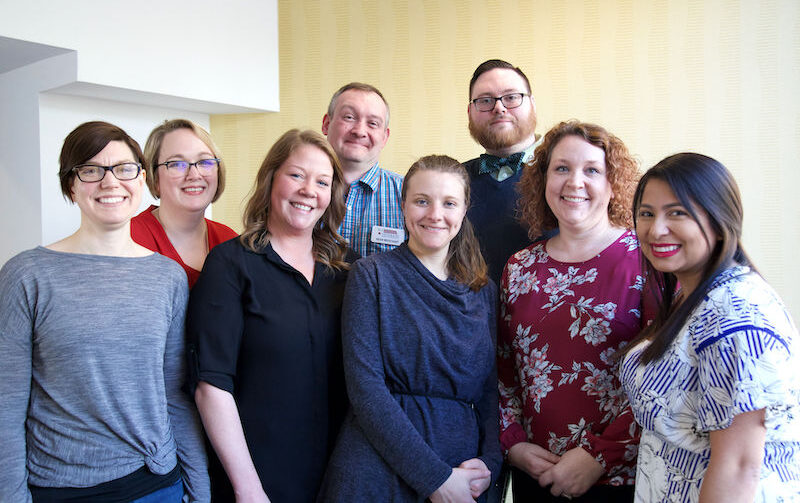Since 2015, Community Solutions has worked with communities to understand what it takes to drive homelessness toward zero, not just for an individual, but for entire populations. Built for Zero emerged as a movement of communities — across the country and the world — proving it is possible to create a reality where homelessness is rare and brief.
There are no magic bullets that can alone achieve these goals. We can only sustain this reality if our communities have systems set up to prevent homelessness, quickly detect homelessness when it occurs, and permanently and promptly resolve homelessness.
Communities have proven that building that system often requires five key changes:
Creating a shared definition of the right end state
The first step to solving homelessness is having a shared definition of what we are trying to achieve. Communities in Built for Zero use functional zero, a milestone that indicates that homelessness is measurably rare and brief for a population. They often work to achieve functional zero for various target populations (veteran, chronic, family, youth, all singles) as steps on the way to making homelessness rare and brief for everyone. This dynamic milestone enables communities to continuously confirm whether they are driving homelessness toward zero.
THE PROBLEM

Funders evaluate success on the performance of individual housing programs, not on whether a community collectively reduces homelessness. But single programs don’t get us to zero — whole communities do.
OUR SOLUTION

Community-level measurement.
Success is measured by the total number of people experiencing homelessness, not by program outcomes. Data enables communities to rapidly test new ideas and understand if those efforts are working.
Assembling an accountable, community-wide team
One of the key challenges to ending homelessness is the distributed and fragmented system of homelessness response. In any community, dozens or even hundreds of organizations may serve people experiencing homelessness, each defining success by their own program measures.
Communities in Built for Zero begin by breaking down these siloes to establish a unified team that creates shared accountability for driving homelessness toward zero. In many communities, these teams are committed to working together weekly to examine how they can connect people to permanent housing, moving from a mentality of “my client” to “our clients.”
They can see the system as a whole and collectively remove barriers that are impacting the whole population of people experiencing homelessness.
THE PROBLEM

No single actor is fully accountable for ending homelessness in a community.
Each local agency or program holds its own small piece of the solution, but no one has their eye on how the pieces fit together.
OUR SOLUTION

An integrated, command center team.
Key agencies, like the Continuum of Care, the housing authority, local government, and the VA, work together consistently toward comprehensive goals.
Using real-time data, which accounts for everyone by name and need
Achieving real-time, person-specific data is a necessary step for driving toward functional zero. By-name data is a comprehensive source of information that accounts for every person in a community experiencing homelessness, updated in real time. Using information collected and shared with their consent, each person on the list has a file that includes their name, homeless history, health, and housing needs.
With this by-name list — updated monthly, at a minimum — the community is able to better match housing solutions with the needs of the individuals. At the population level, this information enables them to prioritize resources, test changes to their system, and understand whether their efforts are driving overall homelessness toward zero.
THE PROBLEM

A once-a-year count of a problem that changes nightly.
Annual street counts are a snapshot; your community needs a video. Getting to zero takes line of sight into how people move through your system over time.
OUR SOLUTION

Comprehensive, real-time, by-name data.
Built for Zero communities know everyone experiencing homelessness by name, in real time. The result is more tailored solutions for individuals and a clearer picture of the system as a whole.
Centering equity
Inequities and homelessness are inextricably linked. Research shows that Black and Native Americans experience homelessness at disproportionately high rates, even when we control for disparities in poverty level.
This means that, like so many other systems of care in America impacted by inequities, the homeless response system produces disparities. The system can maintain or exacerbate these disparities — or work to dismantle them. Communities are using data to understand and improve the equity of a community’s homeless response system.

Targeted, data-driven housing investments
Built for Zero communities use real-time data to secure the housing resources they need and target them for the greatest possible reductions in homelessness. Often, housing investments are disconnected from the systems responsible for supporting people experiencing homelessness, or they focus on maintaining legacy efforts that do not help a community reduce homelessness.
With the real-time understanding of changing dynamics of homelessness within a city or county, partners can work together to make strategic investments that will contribute to population-level results, like community infrastructure and affordable housing.
THE PROBLEM

Housing supply paralysis. Expanded housing resources are crucial, but many cities have dramatically expanded housing supply without making a dent in homelessness. The reason? They never fixed the housing system.
OUR SOLUTION

Strategic, data-driven housing investments. Built for Zero communities use real-time data to secure the housing resources they need and target them for the greatest possible reductions in homelessness.
Homelessness Policy Recommendations
Four recommendations that would scale the impact of the progress we are seeing in communities
TESTIMONIALS
Homelessness is solvable.
Communities in the Built for Zero movement are proving it.





